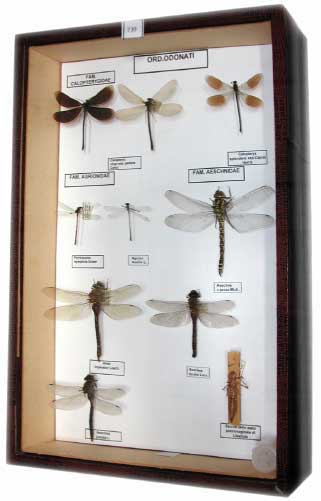
The entomology section is on the first floor of the Museum, where there is a brief overview of the insects of the local area of Alpago. Rather than draw attention to the rarer, or more ecologically important species (which will be seen later), the organisation of the exhibits concentrates on the most common species, ones that a non-specialist visitor might easily come across in the various local settings (fig. 22).
Unfortunately most insects are small and both a good magnifying glass and knowledge of the morphological differences between systematic groups are needed to recognise them.
Our descriptions will therefore concentrate on the lager species in the collection for which a simple comment can be useful.
The exhibits are organised in display cases on the walls.
Like many other groups of invertebrates, insects have an important role in maintaining the delicate equilibrium of ecosystems both on land and in water: this is due partly to their huge quantity in terms of biomass for any ecosystem and partly to the large number of existing species resulting from their great ability to adapt to very varying ecological conditions. There are in fact more insect species than there are species in all the other animal groups put together: out of about 1,500,000 species of animals (vertebrates and invertebrates) known in the world, 1,200,000 species are insects.
Insects, however, were long ignored in considerations of environmental conservation, more importance being given to actions to benefit vertebrates. This choice of seeing only the “superior fauna” as indicators of the naturalness of a habitat has a basic defect: Vertebrates possess in fact a low specificity for particular kinds of habitat, while Invertebrates are more tied to specific micro-environments often characterised by particular vegetation, so they can be used to advantage for verification after conservation actions, and as instruments for environmental monitoring.